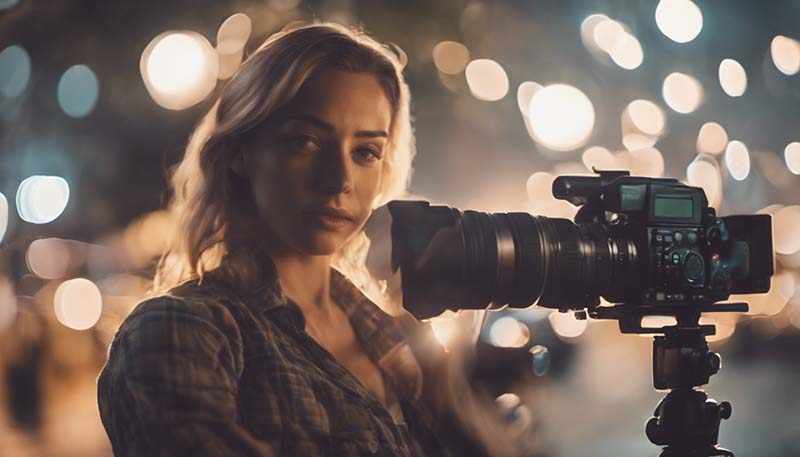The Importance of Lighting in Film: A Cinematic Analysis
The Importance of Lighting in Film: A Cinematic Analysis
Cinematography is the art of visual storytelling, and lighting is one of its most powerful tools. It's not just about making the set visible; it's about setting the mood, enhancing the narrative, and guiding the viewer's attention. This essay will explore the various ways lighting is used in film to create an immersive and emotionally resonant experience.
Introduction
Lighting in film is a nuanced craft that has evolved alongside the medium itself. From the earliest days of cinema, filmmakers have recognized the dramatic potential of light and shadow. The advent of color film, the development of new technologies, and the influence of various film movements have all shaped the way lighting is used to tell stories on screen.
Functions of Lighting in Film
1. Establishing Mood and Atmosphere
Lighting sets the tone for a scene. Whether it's the warm glow of a romantic sunset or the harsh, cold light of a prison cell, the choice of lighting can convey a wealth of information about the emotional state of characters and the nature of the environment without the need for dialogue.
2. Visual Storytelling
Through lighting, filmmakers can direct the audience's attention to specific characters or objects. By highlighting a character in the foreground while leaving the background in shadow, the director can emphasize the importance of that character in the narrative.
Advertisement
3. Characterization
The use of light and shadow can reveal a lot about a character's inner state. For instance, a character often lit from below might appear sinister or troubled, while a character bathed in soft, natural light might seem innocent or at peace.
4. Time and Space
Lighting can be used to suggest the passage of time or the location of a scene. The color temperature of light can indicate whether a scene takes place during the day or at night, and the direction of light can help establish whether a scene is indoors or outdoors.
Techniques of Lighting in Film
1. Three-Point Lighting
The three-point lighting system is a basic, yet versatile setup that includes a key light, a fill light, and a back light. This setup helps create a balanced and professional look that can be adapted to various shooting conditions.
2. Natural Lighting
Many filmmakers choose to work with natural light, also known as available light, to achieve a more realistic and spontaneous look. This technique requires careful planning and can be influenced by weather conditions and the time of day.
3. Practical Lights
Practical lights are lighting sources that are part of the scene itself, such as table lamps, ceiling fixtures, or car headlights. They can add a layer of authenticity and can be used creatively to shape the scene's lighting.
4. Color and Temperature
Color temperature plays a crucial role in setting the mood and can evoke different emotional responses. Warm lights (yellow or red hues) often suggest intimacy or danger, while cool lights (blue or green hues) can indicate calmness or eeriness.
Case Studies
Analyzing specific films can provide a deeper understanding of how lighting is used to enhance storytelling. Here are a few notable examples:
1. "Citizen Kane" (1941)
Orson Welles' masterpiece is renowned for its innovative use of lighting. The film employs deep shadows and high contrast to create a noir-like atmosphere, reflecting the complex and often dark nature of its protagonist, Charles Foster Kane.
2. "Gone with the Wind" (1939)
This classic film uses lighting to underscore the dramatic changes in the characters' lives. The lighting shifts from the soft, romantic glow of the plantation's pre-war era to the harsh, dramatic light that accompanies the war and Reconstruction period.

3. "The Godfather" (1972)
Lighting in "The Godfather" is used to convey power dynamics and the moral ambiguity of the characters. The use of stark, overhead lighting and shadows across faces creates a sense of mystery and intimidation, fitting for the world of organized crime.
Conclusion
Lighting is a fundamental aspect of filmmaking that can significantly impact the audience's experience. It's not just about illuminating the set; it's a subtle yet powerful means of communication that can shape our perception of the story and its characters. Understanding the importance of lighting is crucial for anyone looking to analyze or create cinematic narratives.
As technology advances and filmmakers continue to push the boundaries of visual storytelling, the role of lighting in film will undoubtedly evolve, offering new possibilities for creative expression.